What Can You Burn in a Fire Pit? 14 Things You Should & Shouldn’t Burn
-

- Last updated:
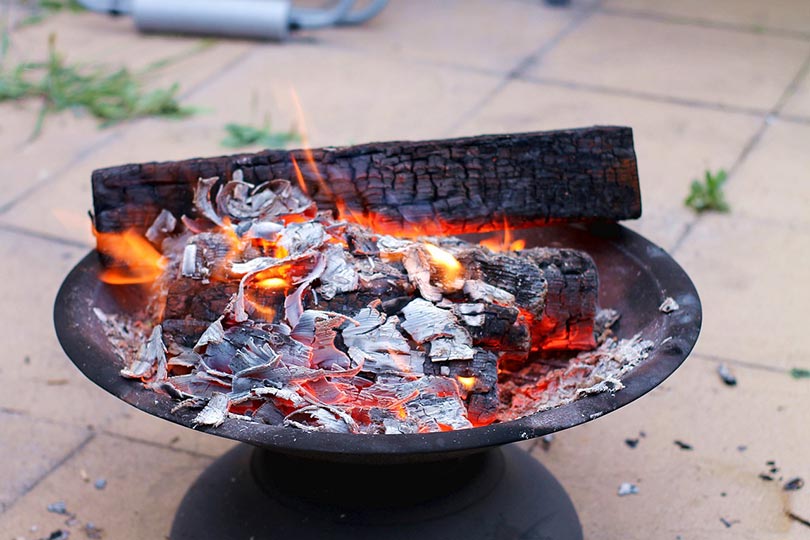
If you’re a big fan of barbeque nights, you probably have a fire pit in the backyard. Specifically designed for camping and cooking, it can handle pretty much any meal you throw its way. Fire pits have a primal, natural vibe that instantly sets the right mood. And cherry, oak, and maple serve as the perfect picks to start a fire.
However, that doesn’t mean you can put whatever you want in a fire pit. We’re talking about trash, gasoline, flammable stuff, and poisonous wood, to name a few. If you do that, you’ll have to deal with low heat, acrid smoke, or something much worse. So, join us to check out the things that you can and can’t burn in a fire pit!

The 8 Things You Can Burn in a Fire Pit
Can’t wait to sit in front of the fire pit for that warm, wholesome feeling of watching the flames dance? Well, you can always do that with firewood and charcoal! But what kinds of wood are safe to burn, exactly? And should you use gas and bioethanol for this? Let’s break it down and see what our options are.
1. Oak
This is one of the best woods for fire pits. First, it’s not a fast burner. Second, oak logs generate very little smoke. Next, it is reasonably priced and largely available. Splitting oak wood doesn’t take much effort, either. On the downside, oak takes its sweet time to dry (2–3 years).
2. Cherry
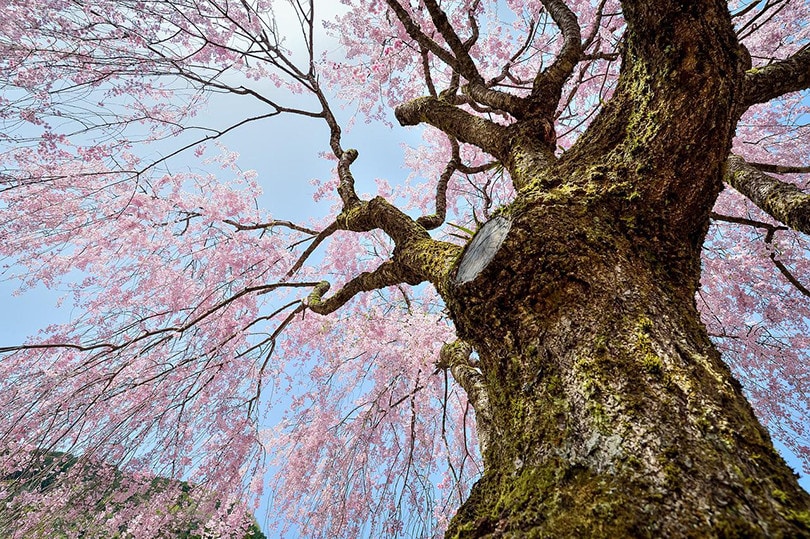
The biggest selling point of cherry is its ability to light quickly. If you’ve got people visiting in like an hour or so, cherry will be the perfect pick for the fire. It might not hold the heat for as long as oak does, but that’s a fair compromise. Cherry is a bit more expensive, though.
3. Maple
Denser than most hardwood species, maple burns for hours, keeping you warm even on the coldest nights. To add to that, it has a lovely flavor that goes great with classic American barbeque recipes. Finally, in the United States, maple is cheaper than oak and cherry.
4. Ash
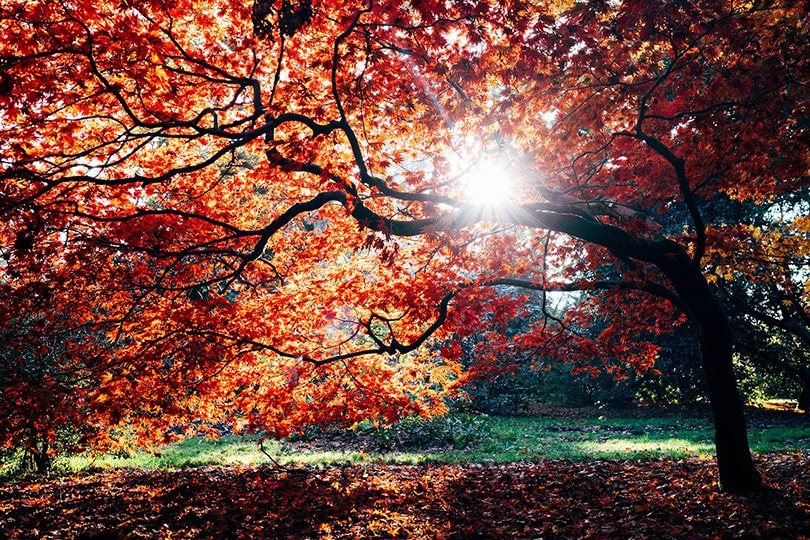
Looking for easy-going logs to make the fire last? Ash will be able to provide just that. It comes at a low price, won’t be hard to get through local suppliers, and boasts above-average heat. This wood doesn’t ignite instantly, however, and does require some patience on your side.
5. Pine
As a softwood wood type, pine is the cheapest option on the table. It does burn out quickly, that’s true, but it’s also very easy to split. That makes pine an ideal pick for kindling right before you put maple, cherry, oak, or ash into the fire pit. Alder is very similar to pine: it burns fast but comes at a lower price.
6. Beach

Much like maple, beech has a unique, delicious odor. And, just like pine, it is cheap and easy to work with. In terms of heat and longevity, it sits right in the middle of the list, lasting longer than pine but less than the more expensive hardwoods. You could also go with cedar (it smells great), but it’s a bit smoky.
7. Charcoal
If you’re in the market for the longest-burning wood, nothing will beat charcoal. Yes, technically, it’s still wood, but with extremely low moisture levels and carbon for days. It’s been around for centuries and is a safe option that generates lots of heat.
8. Gasoline/Bioethanol
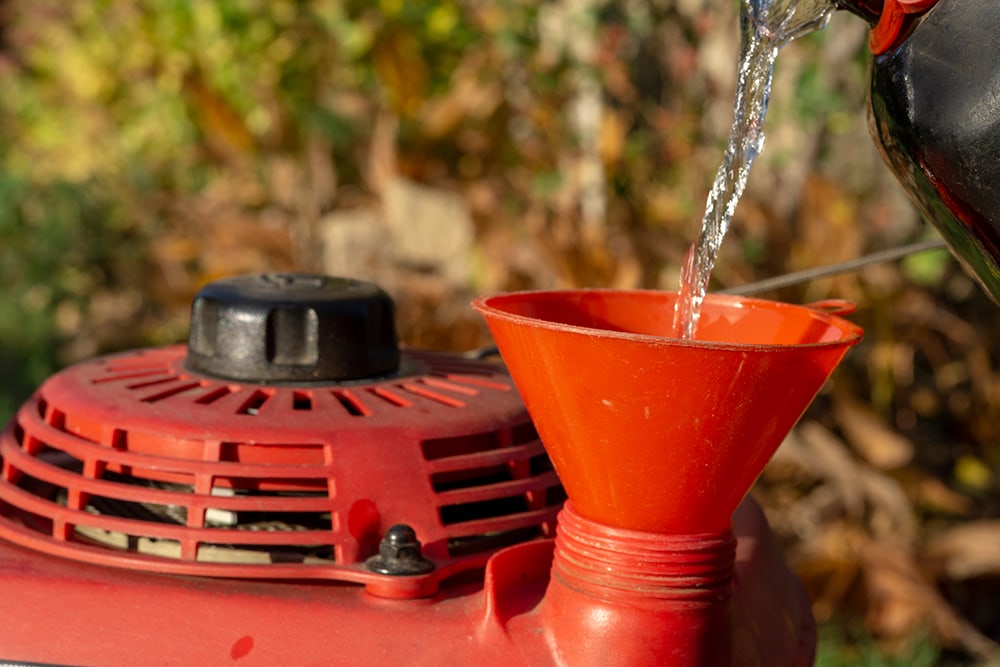
There are lots of fire pits out there that only “feed” on natural gas or propane. While the fuel might be a bit expensive, it’s one of those “start-it-and-forget-it” options. Gasoline burns perfectly evenly on its own and doesn’t need any effort from you. As for bioethanol, it’s an eco-friendly alternative. Make sure to use the right type of bioethanol that’s recommended by the pit’s manufacturer.
 The 6 Things You Can’t Burn in a Fire Pit
The 6 Things You Can’t Burn in a Fire Pit
While the idea of throwing random things into the pit to see how they burn might seem fun, we strongly recommend against doing that. This is true not only for the pit but also for fireplaces, fire tables, and chimneys.
Here’s a close look at stuff that you should NEVER put into a fire.
1. Treated Wood of Any Kind
Natural wood is vulnerable to weather elements, specifically water/humidity. To boost its resistance to rotting and insects, wood is often treated with chemicals. This technique has proven to significantly extend the lifespan of lumber. However, when it starts to burn, all those toxins escape into the atmosphere. We’re talking about creosote or even arsenic.
If you’re lucky, the pressure-treated wood will be marked. But that’s not always the case. So, to protect yourself from dangerous chemical compounds, avoid putting these woods into the pit:
- Painted/stained wood (will give off toxic fumes when you burn it)
- Deck lumber and wooden pallets (treated with methyl bromide, a toxic compound)
- MDF/particle boards (high levels of adhesive that’s rich in dangerous chemicals)
- Railroad ties (treated with creosote oil, rather poisonous)
- Driftwood (not treated, but wet, hard to burn, and potentially dangerous)
The takeaway here is to not touch any wood unless you’re 100% sure it’s natural. We know it can be tempting to burn all the scraps collecting dust in the garage, but it’s better to be safe than sorry. The best way to dispose of chemically-rich lumber is to put it in a municipal trash/authorized landfill. Also, do keep in mind that it’s illegal to burn treated wood in the US.
2. Softwoods and Greenwoods

While these aren’t necessarily dangerous, softwoods shouldn’t be anywhere near fire pits. They are way too sparkly and generate heaps of smoke, which can ruin the fun. Greenwood is just as bad as softwoods: freshly cut, it makes lots of noise and smoke, yet not that much heat. Yard clippings, in turn, burn rather well but may cause an allergic reaction.
3. Paper/Cardboard Waste
Cardboard and paper aren’t toxic, either. Still, you shouldn’t put empty grocery, pizza, or food delivery packages and paper plates into a fire. First, they’ll burn out quickly and won’t generate much heat. Second, if the cardboard is painted, that ink will be poisonous. And watch out for smoldering ash.
You never know when one of those flakes might hit the grass, a tree, bush, your house, or one of the guests gathered around the fire pit! Treat newspapers, beauty catalogs, and magazines the same way. Yes, they are made of paper. But, again, the ink that’s used to color all the pages is toxic.
4. Trash (Plastic and Rubber)
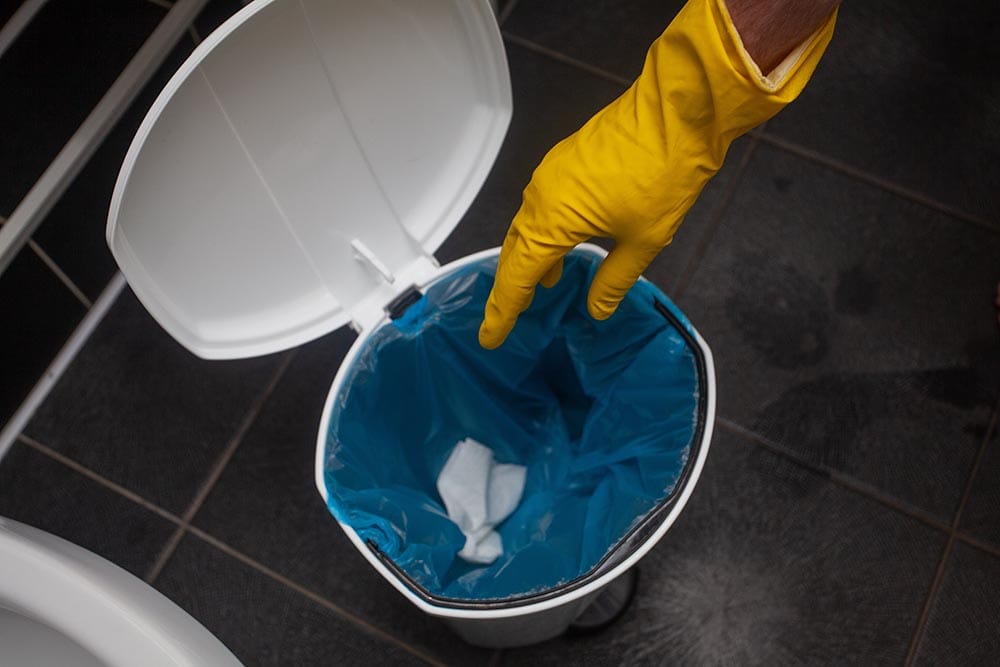
This one’s self-explanatory: don’t burn trash or any other waste in a fire pit. Unfortunately, people tend to put things made of plastic, trash bags, and even rubber into a fire to get rid of them. The problem is, just like pressure-treated wood, this stuff can (and often does) release hazardous fumes when burnt. While they won’t be as hazardous as the toxins in treated wood, you still need to be careful.
Besides, you’ll have a strong smell to deal with. And it goes without saying that electronic devices of any shape or size should never be thrown into a fire. This is especially true for old batteries that can quite literally explode. The same goes for aerosol cans (even if they’re empty). And what about food scraps? Leftovers take a long time to burn plus produce unpleasant odors.
5. Poisonous Plants and Shrubs
In the US, poison ivy grows almost everywhere. Just like poison oak and sumac, it contains toxic oily sap that makes our skin itch. Even one tiny drop is enough for an itching rash to occur. As you can imagine, putting these oils into a fire pit will release dangerous levels of that poison into the air. The side effects of urushiol getting into our lungs can be quite severe.
And the worst thing about these toxic plants/shrubs is that they’re often wrapped around trees, and it’s not that easy to set them apart from harmless plants. Remember: when it’s cold outside and all the leaves are gone, the oils are usually still there. This is another very good reason to stay away from any giveaway wood from your neighbors, as you never know how dangerous it might be.
6. Gasoline/Flammable Liquid
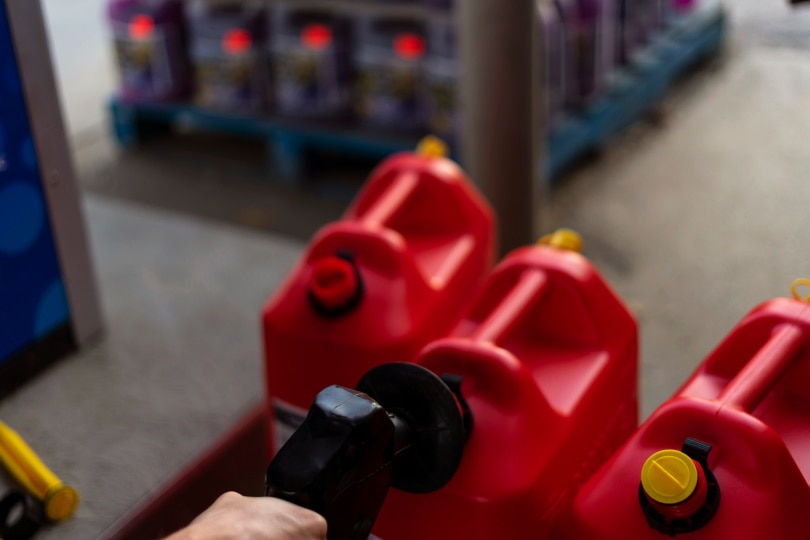
When you add gasoline into a fire pit, that creates a raging blaze. However, while it does look cool, that can lead to dire consequences. Fire accelerants are nothing to play with, as they get out of control in the blink of an eye. This applies to acetone, diethyl ether, paint thinner products, lighter liquid, and alcoholic beverages. A quick note: if the fire pit is fueled with gasoline, that’s an entirely different story and a safe option.
Kiln-Dried vs Seasoned Wood: Which One to Pick?
Greenwood (the lumber from freshly-cut trees) is a BAD choice for fire pits and fireplaces. It’s extremely humid, hard to burn, and smokes like a chimney. But, when it’s dried out, it turns into a prime choice for a pit. So, should you opt for seasoned or kiln-dried wood, then? The term “seasoned” describes wood that dries naturally. This takes a while (6–18 months, or up to 2.5–3 years if it’s hardwood).
Once it starts to crack, that means the wood is ready to go. As for kiln-dried wood, it only needs 3–6 days to dry. It’s also lighter, easier to carry, and ignites faster, not to mention it generates less smoke. Finally, when dried in the kiln, the hardwood becomes pest-free. On the downside, artificially dried wood is more expensive than naturally-dried logs (up to 30%). But that’s only a minor con that’s strongly outweighed by the pros.
Fire Pit Safety 101: A Quick Guide
- Before you fire up the pit, check with local laws on location, use, and size. Certain states and cities have strict regulations regarding outdoor fire pits and fireplaces.
- Have the pit installed at least 15 feet away from the house (or any other structure). This is done to prevent the fire from spreading in case it escapes the pit.
- Make sure the fire pit is standing strong on all legs. Otherwise, it might tip over, causing one big mess.
- Consider opting for a permanent fire pit instead of a mobile one, as it will be more reliable and safer. The ground should be even and sturdy, regardless of your choice.
- Remove any grass, leaves, bushes, and tree branches from the area so that they don’t catch fire. Even if the branches are 60 feet high, the blaze might still reach them.
- To keep embers from causing a disaster, cover them with a spark screen. These aren’t very cheap ($10–200) but will be a reasonable investment.
- Don’t rush the fire. Start with paper or small dry sticks and go from there. Keep adding untreated wood as the fire gets bigger.
- When you’re done, put the fire out. Give the logs time to burn to the ground. As for the embers, they should be cold. Add some water into the pit to kill the fire quicker.

In Conclusion
Fire pits aren’t at all complicated. They are built to withstand extreme levels of heat, keep the fire going for a long time, and cook delicious meals. The most important thing to keep in mind is that while you can, technically, put anything into a fire pit, the consequences could be dire. Thankfully, there’s only a handful of stuff that shouldn’t go into the fire.
If you only use natural firewood or coal, there will be nothing to worry about. In contrast, pressure-treated wood will make your head hurt when it burns, while gasoline/other flammable liquids might hurt someone. Keep our list of dos and don’ts close, always check before you put something into the fire pit, and enjoy your BBQ!
- WebMD – Allergies to Poison Ivy, Oak, and Sumac
- Cleveland Clinic – Poison Ivy, Poison Oak and Poison Sumac
- 7 Outdoor Fireplace, Fire Pit, and Fire Table Safety Tips
- Fire Pit: 10 Materials to Avoid Burning
- Seasoned vs. Kiln Dried Firewood: Does It Burn the Same?
- What Type of Wood Is Best to Burn in My Fire Pit?
- MAJOR HEALTH RISK BURNING TREATED LUMBER
- A Guide To Bioethanol Fire Pits
- MIT – Can we safely burn used plastic objects
- EPA – Best Wood-Burning Practices
- EPA – Learn Before You Burn Wood
- NPIC – Disposal of Treated Wood
Featured Image Credit: JobiWan, Pixabay
Contents
 The 6 Things You Can’t Burn in a Fire Pit
The 6 Things You Can’t Burn in a Fire Pit